Project History
To say this project has a long history might be an understatement. It began back in 1989 after a conversation with Dr. Walter Kohn and Dr. Lawrence Badash while I was studying physics at the University of California, Santa Barbara. I was also working on getting a certificate in Global Peace and Security (now an actual minor), and had taken two courses on the history of the Atomic Age with Dr. Badash, and Dr. Kohn was my certificate advisor. They both lamented the lack of educational materials about nuclear issues, aimed at the high school level. I had recently seen a Mac SE/30 running an interactive program that was controlling an attached laserdisc and was excited to see a computer do something like that. So, I embarked on learning the development tool that had created that experience. It was written using a tool from Apple known as HyperCard. If you’ve never heard of it, it was in some ways a precursor to the internet. It offered a scripting language and the ability to display text and images. I applied for a small grant from the Office of Instructional Learning and began developing a ‘stack’, as HyperCard programs were referred to. I named the project The Physics of the Atomic Age, or more affectionately known as POAA. Over the next year, I designed and wrote the program. Through working on the project I was introduced to Intellimation, a local company in town that developed and sold educational HyperCard stacks. I was able to sell POAA through them. The program spanned three 800k floppy discs.
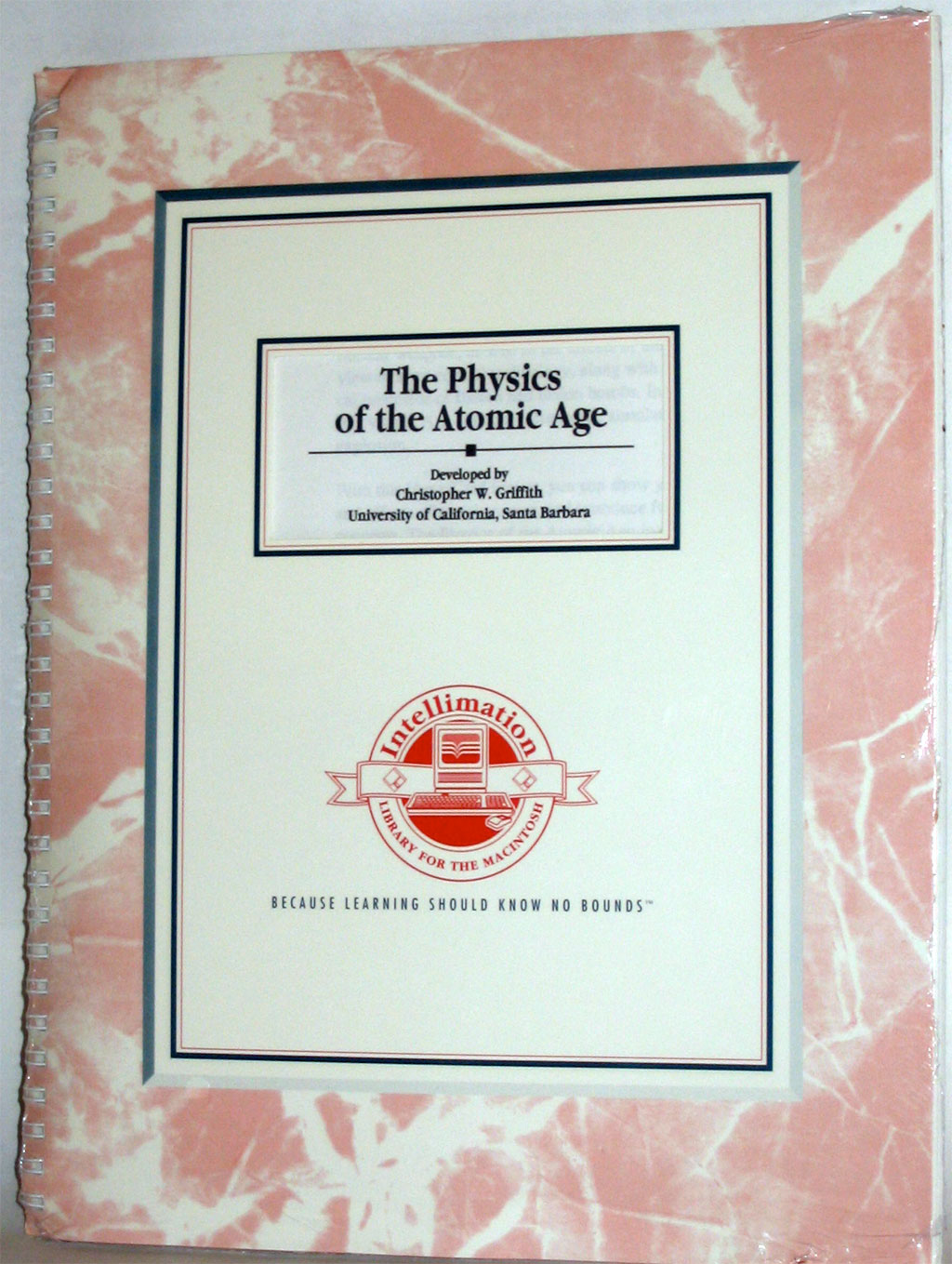
Fast forward a few years, and the introduction of QuickTime from Apple in late 1991 or early 1992. Until then there was no method of playing video directly on a computer. The best you could do was to control a laserdisc that had the video content. But there on my screen was a 160x120 window playing video in color! I could now dream of having actual historical videos within POAA. Along with the introduction of QuickTime, CD-ROMs were becoming wide-spread. No longer bound by floppy discs, which were now holding 1.4 MB each, I had a whopping 640MB of space available to be used.
I continued to work on POAA in my spare time, expanding modules and adding new content. One issue with HyperCard was it never formally supported color. There was a method to enable it, but it was not perfect. I realized if I wanted to keep developing this project, I needed to migrate to a new development tool. Luckily, I was now working for a digital video company in Los Angeles which had all the current multimedia authoring tools. I settled on Macromedia’s Director as my tool of choice. Because of my job, I had already begun learning it.
In the evenings, I began the process of rebuilding POAA. With the 50th anniversary of the dawn of the atomic age approaching, I was hoping to have a finished CD-ROM ready in time. I secured a publisher, Softkey, and obtained the funding to digitize the video footage from various public domain sources. We changed the name of the product to Atomic Age. I bought a 1-gigabyte hard drive to develop the CD-ROM at a cost of nearly $1,000. My wife still reminds me of this from time to time.

The product was sold in stores like CompUSA and other retailers. I can still remember the thrill of seeing it sitting on the store shelf. There were several other titles also produced for the anniversary. The Voyager Company took Jon Else’s fantastic movie, The Day After Trinity, and created a program to interact with it. In many ways, it was just like that first multimedia experience back in Santa Barbara. Corbis produced Critical Mass: America's Race to Build the Atomic Bomb, which was very well done visually, but a bit lacking in content.
I am proud to say that Atomic Age won several awards, including in 2000, Pirelli's INTERNETional Award for best CDROM/Website promoting scientific awareness via the Internet. Following that, the CD-ROM won the Australian Centre for Art and Technology Award for Best CD-ROM.
While CD-ROMs were still the rage, the world wide web was starting to emerge. So, I began exploring this new medium as another avenue to continue the mission of providing educational content about the atomic age. I began learning HTML and started creating the first version of the Atomic Archive website. It was built as a companion site to the CD-ROM. I placed about half of the CD’s content onto the site, still being ever mindful of the graphic size and other technical constraints in doing so. Remember, this was before broadband and every kb mattered (it still does, but that is another issue). The website was even featured on CNN’s Headline News. The server bill that month was not pretty. Around this time I got a proper domain name. They were expensive back then, so I had not done so before.
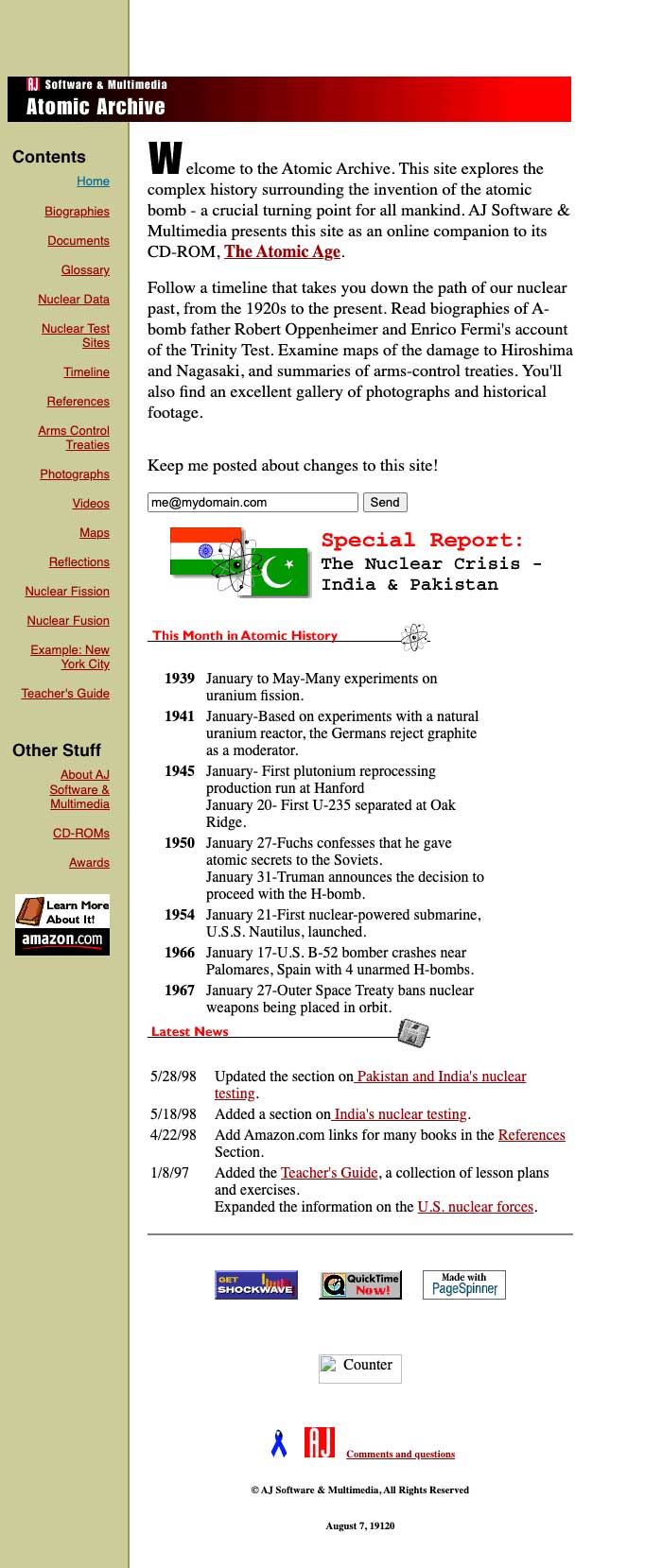
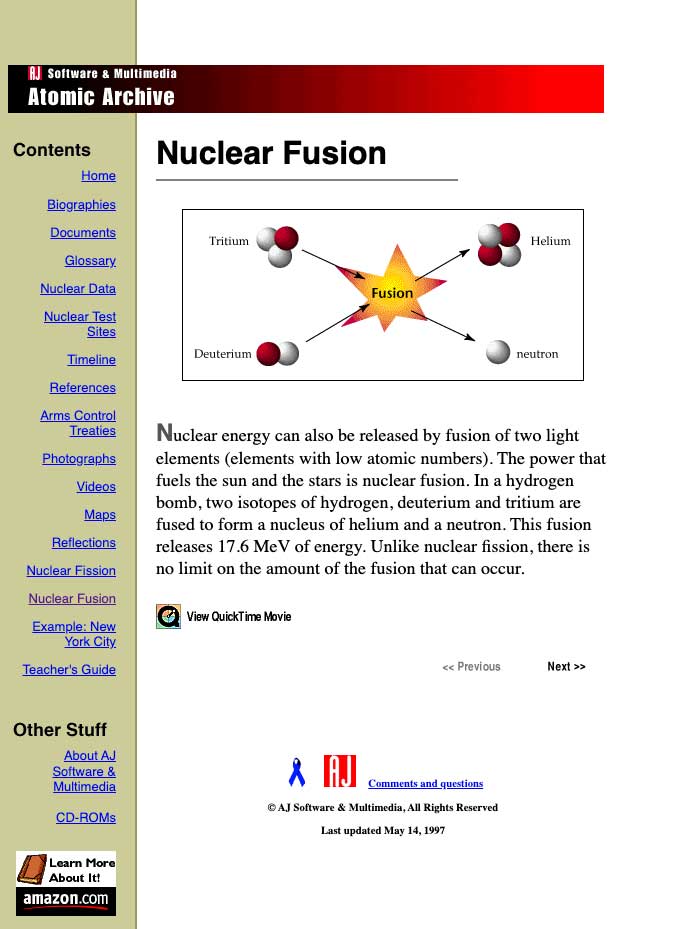
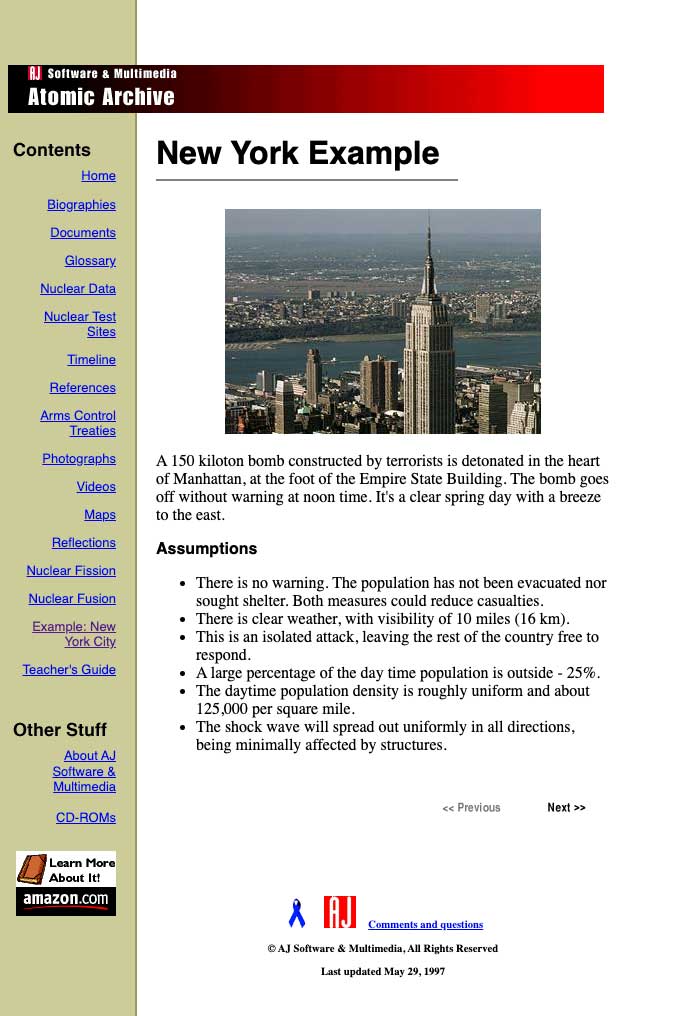
With the milestone anniversary in the past, interest in the title faded. Eventually, I acquired the rights to the project from Softkey. While the site was doing quite well, featured on a variety “Best Ofs” list, (those were a thing back then), I wasn’t ready to let the CD-ROM version die yet. In 1999, I decided to refresh the CD once again. I wanted something more visual, and with the improvements in digital video, bigger and better video content. I was able to license some of the footage from Peter Kuran’s Trinity and Beyond film to use in the new version. Finally, after many months of work, the now renamed Atomic Archive was released! We were able to sell through Amazon, various science museums, and directly ourselves. I finally felt like I got to make the product closer to the product I had envisioned all those years ago.
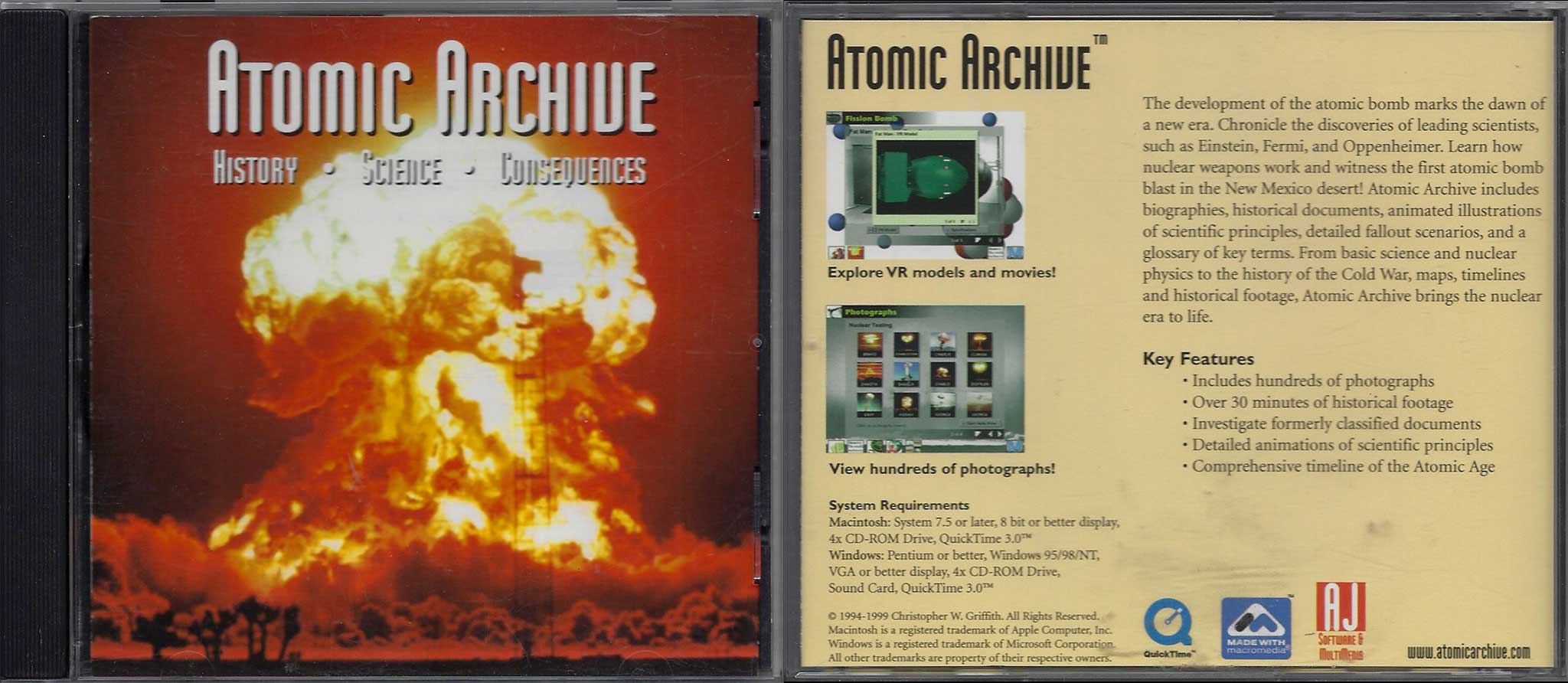
I also updated the website to a new design and even more content. I also wanted to keep the CD-ROM updated. As screens kept getting larger, and I was able to gather more imagery, Atomic Archive: Enhanced Edition was created!
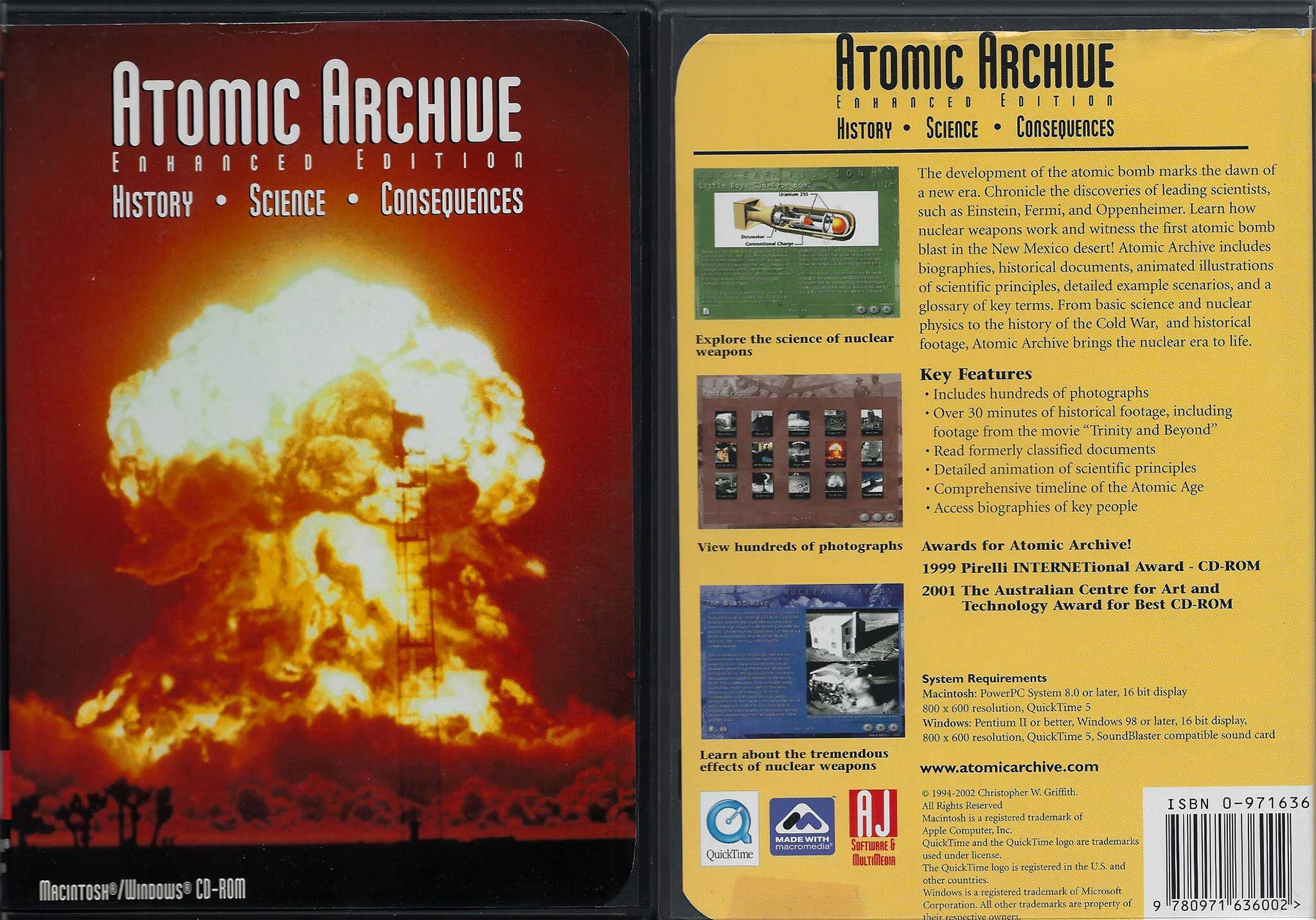
Screens from the CD-ROM
Because of all this, I became involved with the Alsos Project, a digital library effort being led by Dr. Frank Settle of Washington and Lee University. This project was a vetted, annotated bibliography of over 3,000 books, articles, films, CDs, and websites about a broad range of nuclear issues. At first, I was just one of the expert reviewers, but soon I joined as one of the collaborators.

The project was awarded a National Science Foundation grant in 2004. We developed Nuclear Pathways to serve as a curated collection and connected digital library on nuclear issues across multiple sites. We were also a part of the National Science Digital Library effort as well. I designed and developed the Nuclear Pathways site, and led the web integration effort (Sadly, Nuclear Pathways is no longer online, security issues around the database were too costly to resolve and it was shut down).

As part of the effort, I did develop two more related sites: Trinityremembered.com and Hiroshima-remembered.com as part of the grant. Those sites are still up and running. But after three years the grant ended and I stopped most activity around the site.
In addition to the ending of the grant, the era of CD-ROMs was coming to a close. So, we decided to stop selling the CD, which we had been self-producing for some time. The site itself had reached a nice stable point. There was not a lot of new content I was adding to it. In many ways, I ‘archived'’ the archive. I would still get requests from authors looking for content for their books. I love pulling a book off my shelf and know that I am mentioned inside.
In the back of my mind, I knew I needed to return to working on the Atomic Archive website. The 75th anniversary was coming up and technology had moved forward yet again. Some of the interactive modules on the site would soon no longer run with the end of Flash. Even bigger was the rise of smartphones. The entire site was designed to be viewed on a desktop and it did not fare so well on smaller screens. But with over 1000 web pages, I delayed tackling that problem for some time. I also knew that I would want to upgrade all the photos and graphics used throughout the site, so I knew I had some work cut out for me.
I had nominally sketched out some ideas for how I might redesign the site, and with the newly found time due to the Covid-19 pandemic, I set about rebuilding the site. The migration went fairly well. I was able to upgrade almost all the digital assets; graphics became SVGs, so they now adapted nicely. Videos became their native resolution and maps became more dynamic. I also started to expand the site again. Currently I am working on including more about nuclear power. This was a topic I had purposely avoided in the past. I also expanded the photo and video collection. Beyond that, I am working on adding several new collections around the bombings of Hiroshima and Nagasaki.







